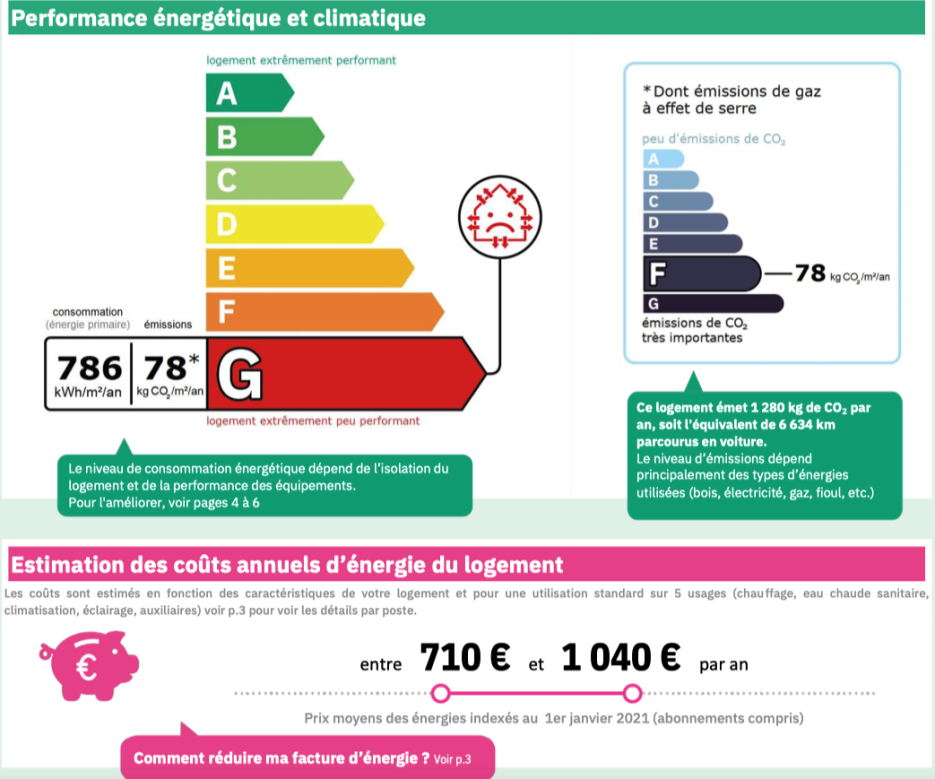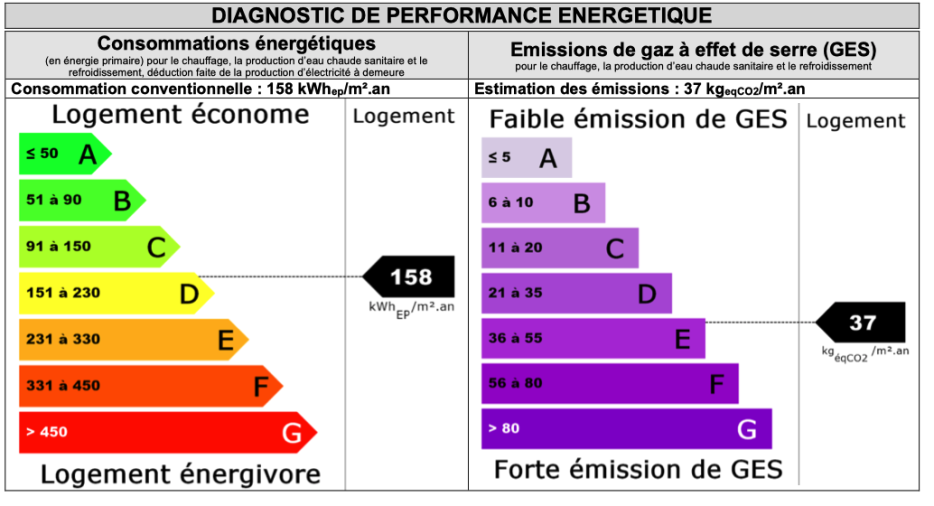Preserving Our Planet
Volume XX, Issue 6

For those of you who own property or are considering making a purchase and renting it out to obtain some revenue, then be aware of the new laws (articles L 126-26 et seq. of the Code de la Construction et de l’Habitation) that are designed to make owners aware of the importance of energy conservation to preserve our planet.

You may already be aware of the diagnostics required by the seller to be performed by licensed diagnosticians intended to improve the information for the buyer. There are many mandatory real estate diagnoses: asbestos, lead, electricity, gas, termites…and others, and in particular, the DPE or “Diagnostic for Performance of Energy” (See the Notaire’s website for more information about the various diagnoses.)
For one thing, the new rules make the diagnostics much more precise. It now considers the consumption of both primary energy (energy label) and greenhouse gas emissions (climate label). Previously based on the energy bills of the former occupants, which was rather unreliable, it will now take the average annual expenditure of five energy utilities in the home: heating, hot water, lighting, air conditioning and auxiliary items such as VMC—”Controlled Mechanical Ventilation.” This points out the energy consumption from both the positive and negative aspects of heat loss, insulation performance, ventilation system and renewable energy production systems (if any). It will also mention the work necessary to improve the home’s energy performance, specifying whether this work is a priority or not.

The label mentioned in the report is the ratio of the quantity of primary energy consumed by the property for sale or rent to the total surface area of the property. There are seven energy classes (A, B, C, D, E, F, G), from “A” (energy efficient property) to “G” (energy intensive property).

These diagnoses are always complicated to read and understand. One thing that has greatly improved is the simplicity of the cover page that now summarizes the essential information (energy label, climate label, and estimate of annual energy expenditure). In addition, the layout uses color references to make it even easier to understand.
Keep in mind that the new diagnosis is opposable—meaning it is possible to challenge it. In other words, buyer or tenant can sue the seller or landlord in case of errors in the energy label. If an owner sells or rents his property labeled at Class E, when in fact it’s an F or a G, he may be forced to carry out the work to improve the energy performance of the property. And even more important, the new requirements will ban the letting of any housing classified as F or G as follows:
– any housing of class G as of January 1, 2023,
– any housing of the class F as from January 1, 2028,
– any housing of the class E as from January 1, 2034.

If the property is classified as F or G, it will be forbidden to increase the rent during the lease by indexation, as well as at the time of re-rental, renewal or renewal of the lease, for leases concluded, renewed or renewed as of August 25, 2022.
The energy class is also taken into account to assess the conditions of decency of a housing. The law n°021-1104 of August 22, 2021 “Fighting against climate change and strengthening resilience to its effects” progressively raises the level of requirement of energy performance included in Article 6 of the Act of July 6, 1989 on the obligation to provide the tenant with decent housing. Article 6 paragraph 3 of the law of July 6, 1989 states:
The level of performance of a decent dwelling is included, within the meaning of Article L. 173-1-1 of the Construction and Housing Code:
As of January 1, 2025, between class A and class F,
As of January 1, 2028, between class A and class E,
As of January 1, 2034, between class A and class D.
This gives the tenant the right to require his landlord to carry out the work to improve the energy performance.

Note: the “Energy” label (calculation of class A, B, etc.) displays primary energy consumption (crude oil, natural gas, solid fuels (coal, biomass), solar radiation, hydraulic energy, geothermal energy, and energy from nuclear fuels) and greenhouse gas emissions (natural gases present in the earth’s atmosphere trapping the sun’s rays and stabilizing the temperature on the planet’s surface). The cost of establishing the technical diagnostic file is borne by the seller or landlord.
A bientôt,
 Adrian Leeds
Adrian Leeds
The Adrian Leeds Group®
P.S. Not only do we have our Adrian Leeds Group website, you can also like and follow us on our two Facebook pages: Adrian Leeds Group and Adrian Leeds On House Hunters International, Twitter and Instagram. If you haven’t done so already, LIKE us today!
To read more, click the links below.






